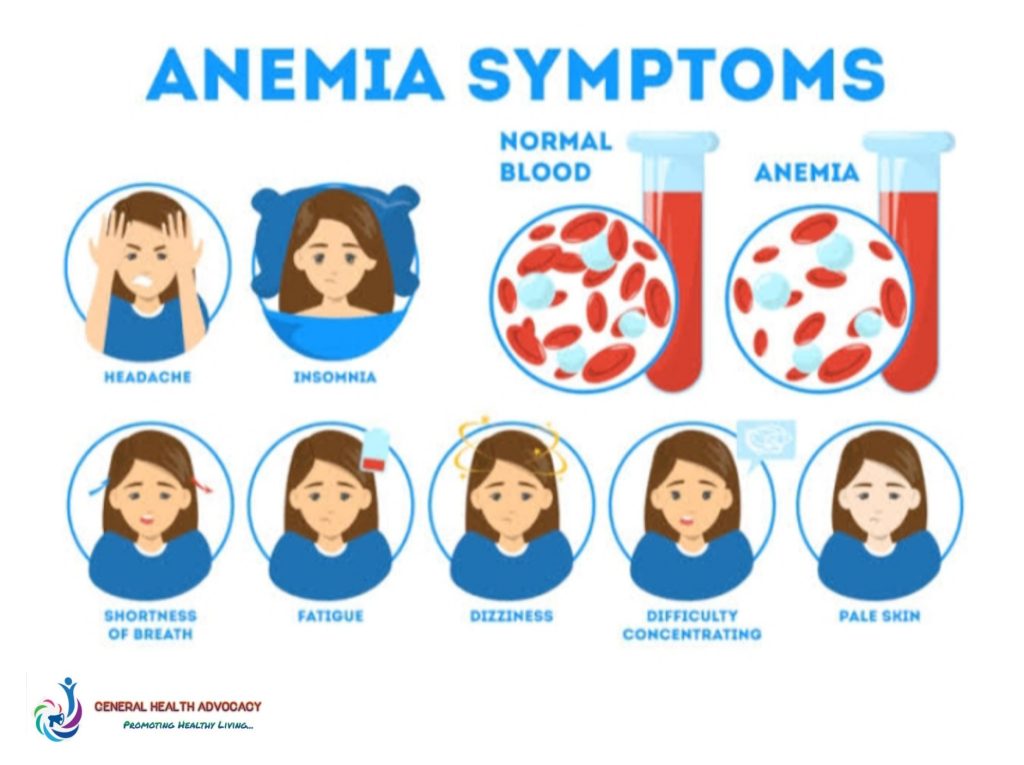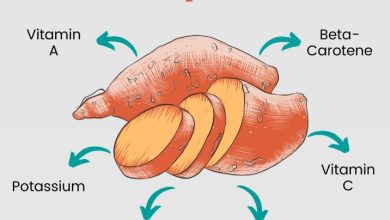Anemia: Understanding the Condition, Its Causes, and How to Treat It

Anemia is a medical condition characterized by a deficiency in the number or quality of red blood cells (RBCs) or hemoglobin in the blood, leading to reduced oxygen-carrying capacity. This results in symptoms like fatigue, weakness, and pallor.
Types of Anemia
Anemia can be categorized into different types based on its underlying cause.
Some of the most common types include:
1. Iron-Deficiency Anemia: The most common form of anemia, caused by insufficient iron to produce hemoglobin, a protein in red blood cells that carries oxygen.
2. Vitamin Deficiency Anemia: Caused by a lack of vitamins B12 or folate, which are needed for red blood cell production.
3. Anemia of Chronic Disease: Often associated with chronic conditions like kidney disease, cancer, rheumatoid arthritis, and other chronic inflammatory diseases. It occurs when inflammation affects the production of red blood cells.
4. Aplastic Anemia: A rare and serious condition where the bone marrow fails to produce enough red blood cells, white blood cells, and platelets. This can be caused by autoimmune diseases, viral infections, or certain medications.
5. Hemolytic Anemia: Occurs when red blood cells are destroyed faster than the bone marrow can produce them. This can be caused by autoimmune diseases, genetic disorders, or infections.
6. Sickle Cell Anemia: A genetic disorder where the red blood cells are abnormally shaped (crescent or sickle-shaped), leading to blockages in blood flow and early destruction of the cells.
7. Thalassemia: A group of inherited blood disorders where the body makes an abnormal form of hemoglobin, resulting in excessive destruction of red blood cells.
8. Megaloblastic Anemia: Characterized by the production of unusually large, immature red blood cells due to deficiencies in folic acid or vitamin B12.
Causes of Anemia
Anemia can be caused by various factors, and it is often linked to an underlying health condition.
Common causes include:
1. Nutritional Deficiencies:
- Iron Deficiency: Iron is essential for the production of hemoglobin. A lack of dietary iron can lead to iron-deficiency anemia.
- Vitamin B12 and Folate Deficiency: Both of these vitamins are crucial for red blood cell production and function.
2. Blood Loss:
- Heavy menstrual periods, gastrointestinal bleeding (e.g., ulcers, hemorrhoids), or trauma can lead to significant blood loss, which reduces the number of red blood cells.
- Chronic conditions like kidney disease, cancer, inflammatory diseases (e.g., rheumatoid arthritis), or infections can interfere with red blood cell production.
4. Bone Marrow Problems:
- Diseases such as leukemia or aplastic anemia affect the bone marrow’s ability to produce red blood cells.
5. Inherited Disorders:
- Genetic conditions like sickle cell anemia or thalassemia result in abnormal red blood cells or abnormal hemoglobin, leading to anemia.
6. Hemolysis (Red Blood Cell Destruction):
- Autoimmune diseases, infections, or certain medications can lead to premature destruction of red blood cells.
7. Pregnancy:
- Pregnant women are at increased risk of iron and folate deficiency, both of which can lead to anemia.
Read Also
Symptoms of Anemia
The symptoms of anemia vary depending on its severity and type.
Common symptoms include:
- Fatigue: The most common symptom due to reduced oxygen supply to tissues.
- Paleness: Skin may appear pale because of a decrease in red blood cells.
- Shortness of Breath: Difficulty breathing, particularly during physical activity.
- Dizziness or Lightheadedness: Occurs due to a reduced supply of oxygen to the brain.
- Cold Hands and Feet: Reduced oxygen circulation can make extremities feel cold.
- Chest Pain: In severe cases, reduced oxygen levels can lead to chest pain or angina, especially in individuals with heart disease.
- Headache: Decreased oxygen supply to the brain may cause headaches.
- Brittle Nails and Hair: Long-term anemia can lead to weakened nails and hair.
- Cravings for Non-Food Substances (Pica): Some individuals with iron-deficiency anemia develop a craving for substances like dirt, ice, or starch.
Anemia Prevention and Treatment
1. Balanced Diet: A diet rich in iron (e.g., red meat, beans, spinach, fortified cereals) and vitamins (B12, folate) is essential.
2. Iron Supplements: For individuals at risk (e.g., pregnant women, vegetarians), iron supplements can help prevent iron-deficiency anemia.
3. Vitamin B12 and Folate Intake: Ensure adequate intake of B12 (found in animal products) and folate (found in leafy greens, legumes, and fortified foods).
4. Regular Check-ups: Early detection through routine blood tests can help prevent complications. This is especially important for individuals with chronic diseases or those at higher risk for anemia.
5. Managing Chronic Conditions: Effective management of chronic diseases (such as kidney disease or rheumatoid arthritis) can help prevent anemia of chronic disease.

Treatment of Anemia
Treatment depends on the type and cause of anemia.
Common approaches include:
1. Iron-Deficiency Anemia:
- Iron Supplements: Oral iron supplements are commonly prescribed to replenish iron stores.
- Dietary Changes: Increase intake of iron-rich foods and vitamin C (which aids iron absorption.
- Intravenous Iron: In severe cases, iron may be administered intravenously.
2. Vitamin B12 and Folate Deficiency Anemia:
- B12 Injections or Oral Supplements: B12 deficiency is treated with injections or high-dose oral supplements.
- Folate Supplements: Folate deficiencies are treated with oral folic acid supplements.
3. Anemia of Chronic Disease:
- Treating the Underlying Disease: Managing the chronic condition can help alleviate anemia.
- Erythropoiesis-Stimulating Agents (ESAs): In some cases, medications like erythropoietin may be used to stimulate red blood cell production.
4. Aplastic Anemia:
- Bone Marrow Transplant: In severe cases, a bone marrow transplant may be required.
- Immunosuppressive Therapy: In some cases, drugs to suppress the immune system may be used.
5. Hemolytic Anemia:
- Corticosteroids: If the cause is autoimmune, corticosteroids may help reduce red blood cell destruction.
- Blood Transfusions: In severe cases, blood transfusions may be necessary.
6. Sickle Cell Anemia:
- Pain Management: Pain relief for episodes of sickle cell crises.
- Hydroxyurea: A drug that can reduce the frequency of crises.
- Blood Transfusions: May be used for severe cases.
- Bone Marrow or Stem Cell Transplant: In some cases, this may offer a cure.
7. Thalassemia:
- Regular Blood Transfusions: To manage anemia.
- Iron Chelation Therapy: To remove excess iron accumulated from frequent transfusions.
8. Megaloblastic Anemia:
- Folic Acid and B12 Supplements: Given to correct deficiencies and improve red blood cell production.
In cases where anemia is caused by blood loss (e.g., from ulcers or heavy menstruation), surgical treatment or medications to stop the bleeding may be necessary.
In conclusion, anemia is a multifaceted condition with various causes and types, but it can generally be prevented or effectively treated with the right approach.
Early diagnosis, proper nutrition, and managing underlying health conditions are key in preventing and treating anemia.
If you suspect you have anemia or are experiencing symptoms, it’s important to consult with a healthcare provider for proper diagnosis and treatment.



